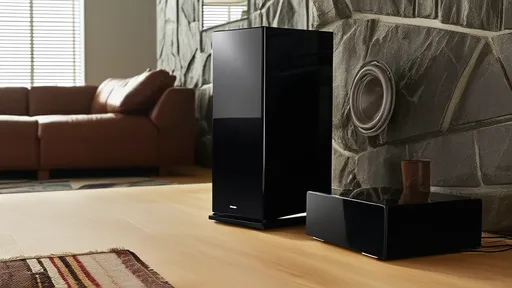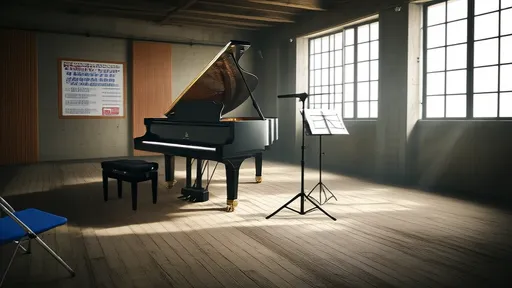The gentle, flowing notes of a piano have long been associated with relaxation and tranquility. There’s something inherently soothing about the instrument’s ability to convey emotion without words, making it the perfect companion for winding down after a long day. For those seeking solace in music, a carefully curated selection of bedtime piano pieces can transform the transition from wakefulness to sleep into a serene and almost meditative experience.
The concept of using music to aid relaxation is far from new. Historical records show that ancient civilizations employed melodies and rhythms to calm the mind and body. Today, modern science confirms what our ancestors intuitively understood—music, particularly slow-tempo piano compositions, can lower heart rates, reduce cortisol levels, and ease the nervous system into a state of rest. The absence of lyrics in instrumental pieces further eliminates cognitive distractions, allowing the listener to fully immerse themselves in the soundscape.
When selecting piano music for bedtime, the choice of composer and style plays a crucial role. The works of Ludovico Einaudi, for instance, are often celebrated for their minimalist beauty and repetitive, wave-like structures that lull the mind into stillness. His compositions, such as "Nuvole Bianche" or "Una Mattina," are not just melodies but emotional journeys that guide the listener toward introspection and calm. Similarly, the delicate phrasing of Yiruma’s "River Flows in You" has become a modern classic for relaxation, its tender notes evoking a sense of gentle motion, like water over smooth stones.
Beyond contemporary composers, the timeless works of classical pianists like Claude Debussy and Frédéric Chopin remain unparalleled in their ability to soothe. Debussy’s "Clair de Lune" is a masterclass in atmospheric piano writing, its dreamlike arpeggios and soft dynamics mimicking the quiet shimmer of moonlight. Chopin’s nocturnes, on the other hand, are intimate conversations between pianist and listener, each piece a whispered confession of melancholy and peace. These compositions, though centuries old, retain an almost magical ability to quiet the mind.
For those who prefer a more ambient approach, the works of composers like Brian Eno or Nils Frahm offer a different kind of lullaby. Eno’s "Music for Airports" is an exercise in subtlety, where sparse piano notes float in and out of silence, creating an environment of weightlessness. Frahm’s "Says" blends piano with electronic textures, producing a soundscape that feels both organic and otherworldly. These pieces are less about melody and more about space, allowing the listener’s thoughts to dissolve into the quiet between the notes.
The benefits of incorporating piano music into a bedtime routine extend beyond mere relaxation. Studies have shown that consistent exposure to calming music before sleep can improve sleep quality, particularly for those who struggle with insomnia or restless thoughts. The predictability of certain piano pieces—soft dynamics, slow tempos, and harmonious resolutions—signals to the brain that it is time to unwind. Over time, the mind begins to associate these auditory cues with sleep, making the transition into rest even more effortless.
Creating the perfect bedtime piano playlist is a personal endeavor. Some may find comfort in the familiarity of well-known pieces, while others might seek out lesser-known works that feel uniquely their own. Platforms like Spotify and Apple Music offer countless pre-made relaxation playlists, but the most effective collections are often those tailored to individual preferences. A mix of solo piano, light string accompaniments, and even sparse electronic elements can create a layered yet unobtrusive soundscape that feels both comforting and fresh.
Ultimately, the power of bedtime piano music lies in its simplicity. Unlike other forms of entertainment that demand attention, these compositions ask nothing of the listener. They exist not to be analyzed or understood, but to be felt. In a world that often feels overwhelmingly loud, the quiet elegance of a piano’s notes serves as a reminder that stillness, too, can be profound. Whether it’s the timeless resonance of a Chopin nocturne or the modern minimalism of Einaudi, these pieces offer a sanctuary—one where the mind can finally let go, and sleep can gently take hold.

By /Aug 5, 2025

By /Aug 5, 2025

By /Aug 5, 2025

By /Aug 5, 2025

By /Aug 5, 2025

By /Aug 5, 2025

By /Aug 5, 2025

By /Aug 5, 2025

By /Aug 5, 2025

By /Aug 5, 2025

By /Aug 5, 2025

By /Aug 5, 2025

By /Aug 5, 2025

By /Aug 5, 2025

By /Aug 5, 2025

By /Aug 5, 2025

By /Aug 5, 2025

By /Aug 5, 2025

By /Aug 5, 2025

By /Aug 5, 2025